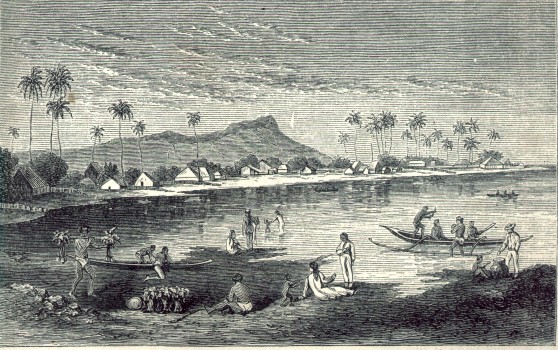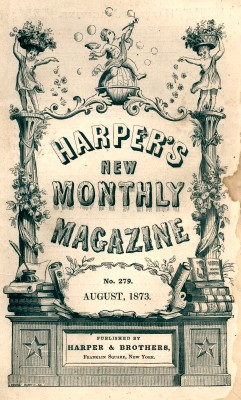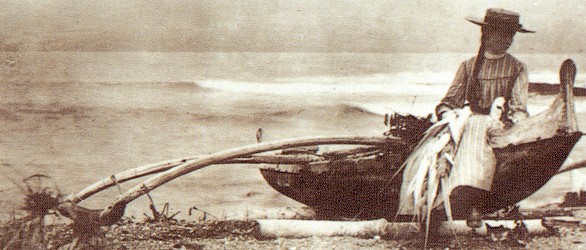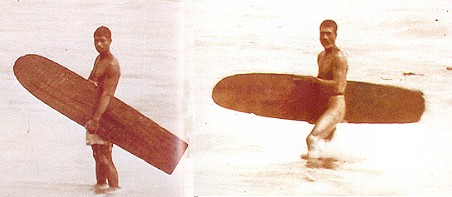Page 399
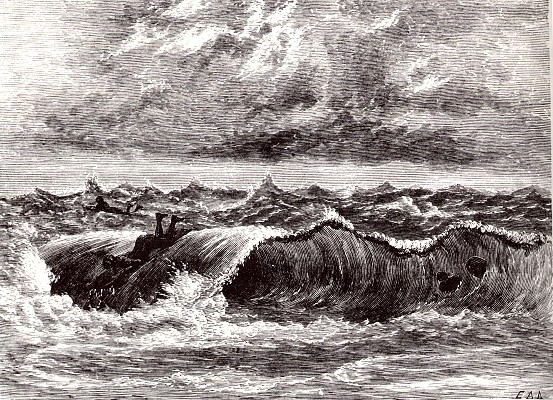
SURF BATHING
|
Page 402
Finally,
Hilo
is one of the very few places on these islands where
you can see
a truly royal sport- the surf-board.
It
requires a
rough day and a heavy surf, but with a good day It is
one of the finest
sights in the world.
The
surf-board
is a tough plank about two feet wide and from six to
twenty feet long,
usually made of the bread-fruit-tree.
Armed
with these,
a party of tall, muscular natives swim out to the
first line of breakers,
and, watching their chance to duck under this, make
their way finally,
by the help of the under-tow, into the smooth water
far off beyond all
the surf.
Here
they bob
up and down on the swell like so many ducks, watching
their opportunity.
What
they seek
is a very high swell, before which they place
themselves, lying or kneeling
on the surf-board.
The
great wave
dashes onward, but as its bottom strikes the ground,
the top, unretarded
in its speed and force, breaks into a. huge comber,
and directly before
this the surf-board swimmer is propelled with a speed
which we timed and
found to exceed forty miles per hour.
In
fact, he goes
like lightning, always just ahead of the breaker, and
apparently downhill,
propelled by the vehement impulse of the roaring wave
behind him, yet seeming
to have a speed and motion of his own. |


